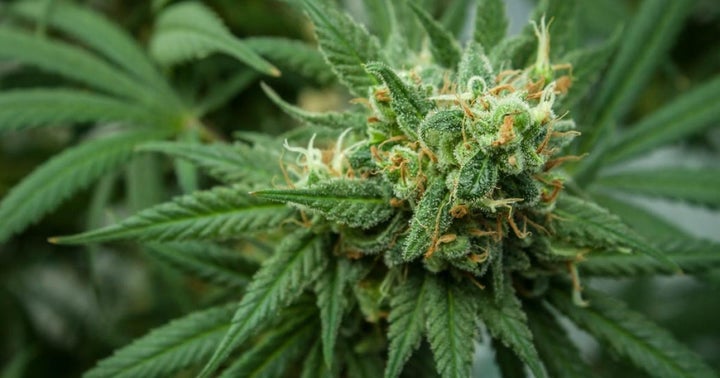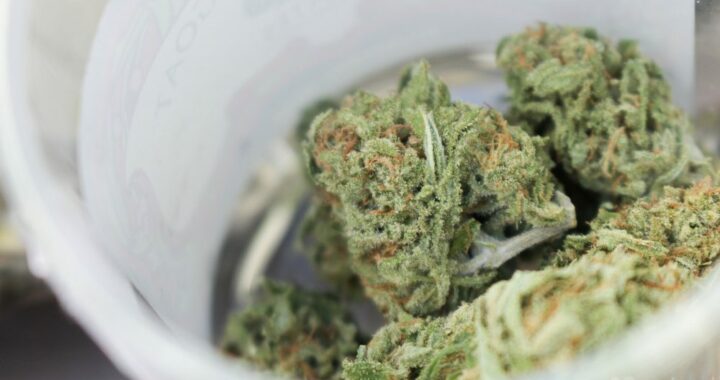Why Medical Cannabis Markets Still Matter
6 min read
Posted by Alex Milligan, Co-Founder and CMO of NuggMD.
It is fair to say that active participants on both sides of the cannabis market – suppliers and consumers – are delighted to read every headline announcing another state or county legalizing the use of recreational marijuana. In fact, fewer than 7 million of America’s 335 million people live in places without some marijuana legalization. The surprising speed with which state-level legislation is removing barriers to adoption is a long-awaited dream for many who were previously only involved “out of the shadows” in the cannabis ecosystem.
What is driving this new wave of approval? Few would argue that an essential step in this process has been the widespread acceptance of medical marijuana (MMJ) by the medical community as a common treatment strategy for a long list of clinical diseases. While growth estimates are difficult to pin down in such a dynamic industry, the most common ones suggest that while the MMJ market exceeded $ 22.4 billion in 2020, it has a CAGR of over 19.3% between 2021 and 2027 and Reached $ 87.4 billion.
But I want to discuss a leap that many then take to predict the growth patterns of the MMJ industry for the next decade. The assumption is that the demand for MMJ will decrease as recreational marijuana becomes more mainstream and therefore freely available (without the formality of prescriptions, the formality and precision of dosage, and the limitation of use). On the surface, this theory seems to have some logic, but there are over a dozen different reasons why it doesn’t.
The smoke at the end of the tunnel
Legislation and formal legalization are a process. Despite the headlines, marijuana is actually only fully legal (for both uses) in 15 states and Washington DC, while 25 allow medicinal use only with a prescription. Will the rest get there? I think they will. But some states – maybe many – will take years and even then gradually move into the recreational arena. Until then, MMJ will hold its value and continue to grow.
The word from above
Although the Biden government has been undecided about decriminalizing marijuana at the federal level, both the President and Vice President agree that reforms should be implemented to support the use of medical marijuana. Federal support for recreational use seems a long way off, and in the meantime, support for medical use could represent the middle ground of administration.
The voice of the NIMBY
As a compromise to the “not in my backyard” vocal contingents in most states (actually often a collection of contingents with various different concerns), many of the states that have previously legalized recreational use have done so through an initiative process. Certain places could, and many did, veto the change. This process has rarely been used as a tactic to legalize the use of medical marijuana as there are few objections.
Federal suit
The same sensitivity to public opinion can similarly affect federal lawmakers as they seek to please both zealous and resilient constituencies in their home states. Therefore, federal legislation will most likely also offer these local and even state exemptions to override national regulations. Surveys show that many states have overwhelming, non-marginal citizen support for prescription MMJ: As in 2018, a large majority (85 percent) of Wyoming residents said they support the legalization of marijuana for medical purposes, if a doctor prescribes it. There are similar numbers in Arkansas (84%) and Pennsylvania (87%).
This magical medical card
Even most states that are legal for recreational use are making a point of allowing more flexibility and benefits for obtaining marijuana when managed through medical channels: Approvals for Growing Marijuana for Personal Medical Use , larger amounts for recreational use than other consumers, higher ownership and purchase limits and even lower tax rates! Add this to additional legal protection, higher potency products, and other priority service opportunities, and getting that health card becomes very attractive. This is again a way for states to make it clear that they are in control of this developing industry, with more robust documentation and tracking for medical, behavioral, or criminal consequences and adverse consequences.
The strength of the stigma
Depending on your perspective, this can be obvious or astonishing: There are many states where, despite the legality of medical use, a class of more conservative patients still opposes MMJ treatment due to old-school stigmas and personal resistance to treatment Concept of drug use. If states roll out medical uses at a rapid pace and add a trusted seal of approval, those scars will fade and we will see the growth of medical treatment accelerate. These patients will never experience the same level of confidence when self-treating via recreational products.
The medical degree
Similarly, physicians are primarily conservative and trained in rigid pharmaceutical strategies. While many certainly seek to differentiate and offer innovative treatment options, many carefully collect and review studies that offer them the backing to support their treatment acceptance.
Safer than you think
One of the discoveries these doctors make is that MMJ is rarely a smart way to obtain recreational cannabis. There have been shockingly few reports of patients abusing the system when given their flowers, oils, creams, or foods to treat very real chronic conditions such as cancer, seizure disorders, severe pain, opiate use disorders, and cachexia. Even those with recipes to use as a basic sleep or anxiety relief aid are given specific dosages and schedules … and stick to them. More interestingly, a recent study by Yale University of data from 812 counties in 23 states found that increasing the number of in-store marijuana dispensaries from one to two resulted in a 17% decrease and increase in mortality rates for all opioid types of two to three stores were associated with a further 8.5% reduction in mortality. In short, the opioid pandemic is measurably reduced by offering a safer, natural alternative with a significantly lower risk of addiction or side effects. When researchers at the University of Washington’s School of Nursing surveyed a random sample of actively licensed healthcare professionals legally allowed to grant medical cannabis approvals in Washington state, 72 percent agreed, “Medical marijuana should be used Reduce Do not use opioids for non-cancer pain. “
What’s new
Global innovations, which are driven in their early stages and offer plenty of room for growth from both start-ups and established pharmaceutical companies, are largely concentrated in the medical industry. Investors are diving deep, and this new branch of MedTech is showing no sign of subsiding. Researchers recommending these trades have all seen the technical growth trends and their clients are responsive in kind.
What is still ahead of us
Aside from the chronic conditions commonly treated today, there is strong evidence that cannabis compounds also have cancer and antibiotic benefits, and even help treat conditions that are otherwise antibiotic resistant. These and other applications promise to expand the reach of MMJ to new medical specialties.
Does medical cannabis have solid growth in its future? We can look over our shoulder – until the Pure Food and Drug Act of 1906, cannabis was considered medicine and was sold in pharmacies. After a short, centuries-long hiatus, it’s back for good. Yes, medical marijuana may be more restricted, regulated, and structured – the opposite of the more free-running, traditional tone we associate with recreational herbs. We must remember, however, that MMJ is essentially merging into perhaps the largest, most widely distributed, and well-funded sectors in history. When we consider the vast power and financial base of the healthcare industry, there is every reason to believe that regardless of the parallel growth in recreational products, MMJ will continue to stand on its own.
Petrol Gas Related Links:
Join us on SPAC’s attack with Matt Higgins & Gary Vee
© 2020 Benzinga.com. Benzinga does not offer investment advice. All rights reserved.








 Protected by Patchstack
Protected by Patchstack